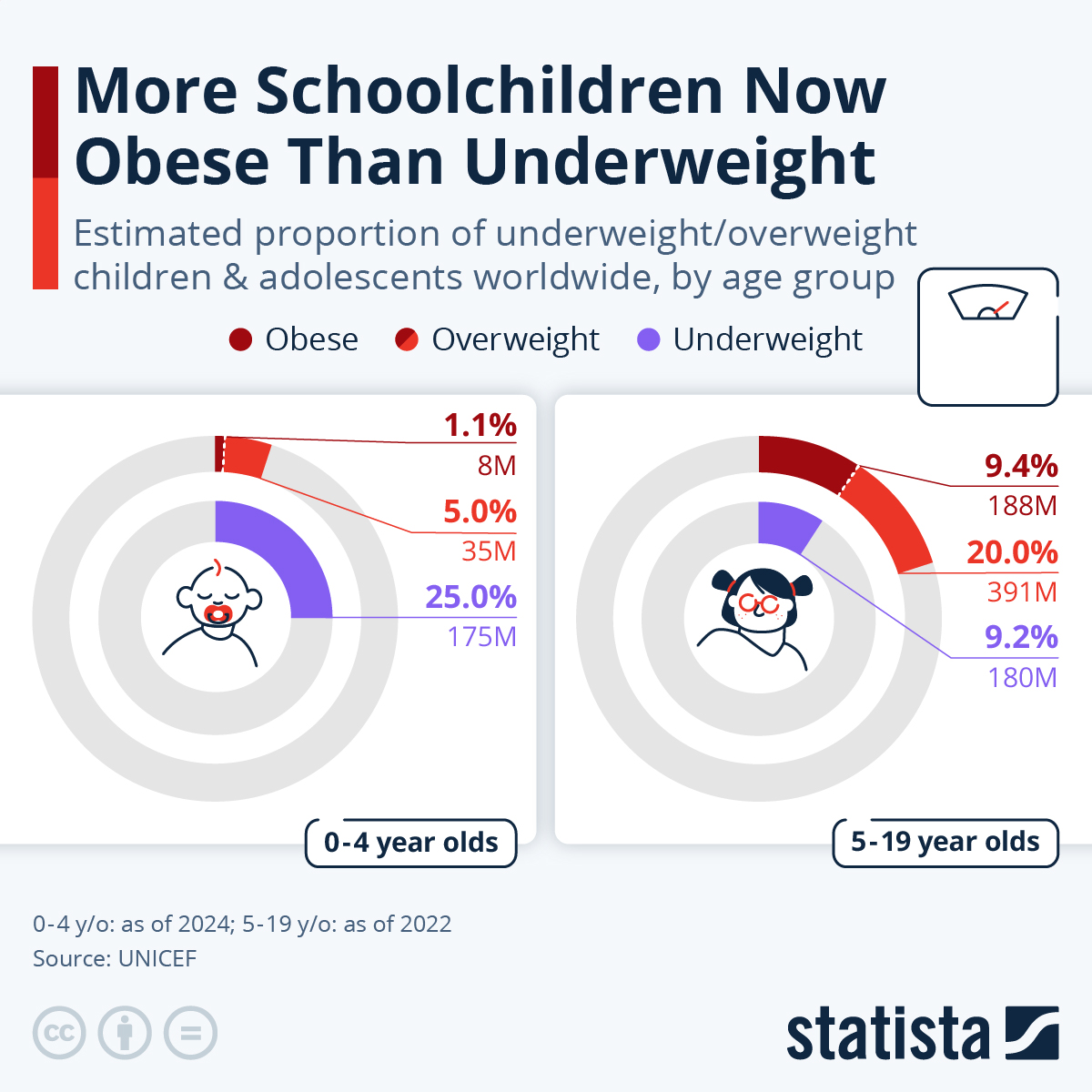For the first time ever, more children and adolescents aged 5 to 19 worldwide are obese than underweight.
As Statista's Calentina Fourreau details below, according to UNICEF, around 188 million schoolchildren and adolescents worldwide are obese, while only around 180 million are underweight. In total, more than 420 million children of all ages are overweight. At the same time, an estimated 370 million children globally are underweight, almost half of them under the age of five and suffering from stunting or wasting due to food shortages and poor nutrition.
You will find more infographics at Statista
This year's UNICEF report on child nutrition sheds light on the reasons behind this long-standing reversal.
According to the report, ultra-processed, sugary and energy-dense food has been replacing fruits, vegetables and protein in children's diets, leading to potentially long-lasting health issues.
The UN sees this as directly linked to aggressive marketing by food companies, which, according to the report, countries around the world should counter with legislative changes, clear labelling, as well as targeted taxes.
In countries in the Global South in particular, growing prosperity has been accompanied for years by an increase in the consumption of unhealthy foods and thus the spread of obesity.
In the 5- to 9-year-old age group, there have been more obese than severely underweight children since 2019.
This change is predicted for older children and adolescents in 2028 and 2029, respectively.
While 60 per cent of adolescents between the ages of 15 and 19 worldwide consume more than one sweet drink or food item per day, the proportion in Eastern Europe, Latin America, the Middle East and North Africa, and East Asia already exceeds this average.
Loading recommendations...
